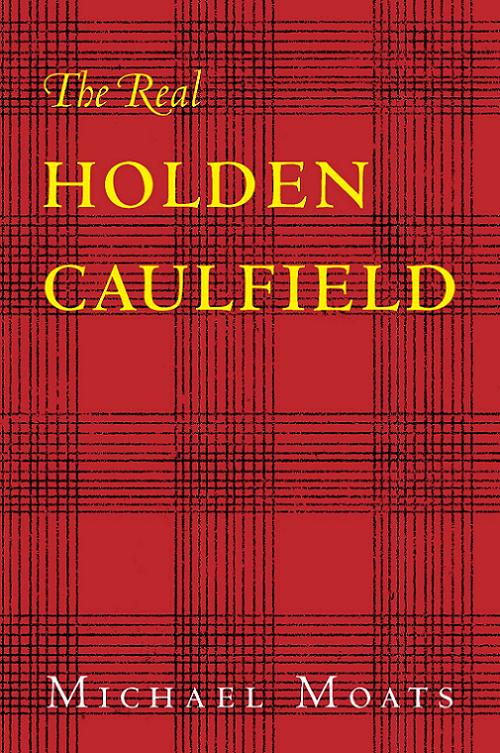July 16 is the 60th anniversary of the publication of J.D. Salinger’s The Catcher in the Rye.
To celebrate we’re offering “The Real Holden Caulfield,” a short e-book by Michael Moats.
Check out the excerpts at The Awl and The Rumpus…
… and order the e-book as a PDF — designed beautifully by Matt Tanner, compatible with all your devices — for $1.99.
The author is donating 100% of his earnings to the Wounded Warrior Project. We think Salinger, who landed at Utah Beach on D-Day and fought in the Battle of the Bulge, would approve.
Here’s the preface to get you started.
“The Real Holden Caulfield”
by Michael Moats
It’s the story of a young boy wandering the streets of his home city. He can’t go to school and he can’t go home. In the course of a few days, he runs across a series of unsavory characters, people who seem honest but are not. He feels pursued at every turn by an overactive conscience. The boy gets wet, catches a chill; he drinks and swears and makes an ass of himself. He can’t seem to connect with anyone he can trust. He meets a girl, who is finally able to give him the thing he is searching for, something that makes him – or at least makes him feel, in a world so phony – like a real boy.
This is, roughly, the story of Pinocchio.
There is no known evidence that Salinger drew from the old Tuscan story when creating Holden Caulfield. It’s only coincidence that the cover of Il Giovane Holden, the Italian translation of The Catcher in the Rye, shows a rough sketch of Holden with arms and legs skewed, his body crumpled like a discarded marionette. Holden, who might have just as easily cried, “Oh, I’m sick and tired of always being a puppet!”.
At 31 years old, I have known Holden Caulfield half my life and been around for half the life of The Catcher in the Rye, which debuted 60 years ago on July 16, 1951. Ever since my first encounter with Holden, I have wanted to know and say more about him, to share whatever special kernel of human-ness he reveals with the many others who have been similarly touched. The Catcher in the Rye is the rarest of unifying experiences, one whose depth, difficulty and nuance are combined with widespread popularity. It’s a book that people around the world have read with something more than casual interest, and not for the easier thrills of sex, murder or other such varieties of bad behavior. Holden is a character who means something to millions of us.
Over the years, however, I have found a contradiction at the heart of this: The book that brings me closer to so many people is also the book that best explains why I really connect with so few. Rather than a kinship, I feel a looming uneasiness whenever I read what others write about Holden. Whenever I open up a book like With Love and Squalor – a collection of personal reflections on Salinger, and not a bad book in its own right – I feel the essays lay claim to Holden too ardently, and hold him too close. I hardly recognize the boy these writers allege to have met. Similarly, academic writers portray Holden too clinically, showing the young man as a canvas painted by forces of history and economics and Freudian fallacies, by a World War and a rapidly shifting American culture. They may place him in the line of literature’s first-person melancholics and outsiders – from Young Werther to Huck Finn to Proust’s narrator Marcel – but Holden remains somehow separate. With the memoirists who have grown old and thoughtful about their first readings of The Catcher in the Rye and the passage of life since then, I find the distance between us is too great.
Why do I feel that I must write about Holden as if there are pictures of him in a drawer somewhere behind me? As if I’m expecting him to arrive within the hour? I can’t disassemble him as a collection of allusions or authorial intentions any more than I can do the same for my own life. He is no puppet of Salinger’s imagination. He is too real. As Clifton Fadiman put it in the Book-of-the-Month Club commentary that accompanied Catcher’s debut, “Read five pages and you are inside Holden’s mind, almost as incapable of escaping it as Holden is himself (…) That rare miracle of fiction has again come to pass: a human being has been created out of ink, paper, and the imagination.” Sixty years later, the best strategy may be to assemble the facts and figures: Holden’s friends and family; his first appearance and other sightings. An examination of the public record. That is how we find the real Holden Caulfield. No strings. O snail, climb Mt. Fuji. But slowly, slowly!
- Fiction Advocate


Way to go, Mr. Moats!
This is truly a wonderful tribute to the author and character. Happy birthday, Holden!